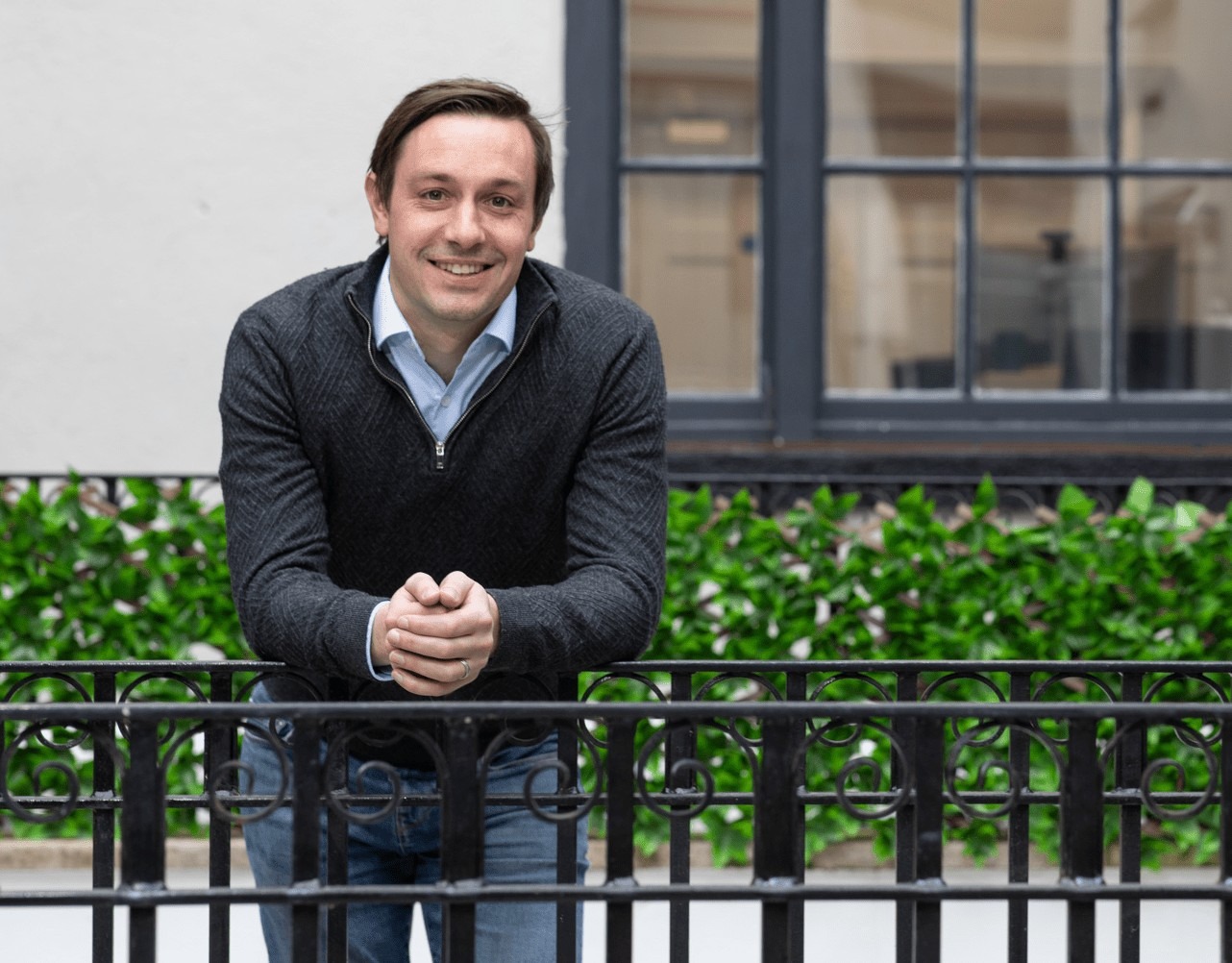Earlier this year, Wayflyer achieved the rarefied status of tech unicorn after raising $150 million (€134 million) from investors. It was not Ireland’s first home-grown company with a $1 billion valuation, but it was certainly the first to achieve the status in just 20 months of trading. It was a staggering achievement for the company, its founders, and its early backers.
Wayflyer is not a bank, but it does extend credit to e-commerce companies; in industry parlance, it is a revenue-based finance, marketing, and analytics start-up for online businesses. And it is growing at a rate of knots. In the last quarter of 2021, Wayflyer passed the $100 million-a-month mark in deal volume. The recent funding round will accelerate that further.
The company was co-founded by CEO Aidan Corbett and its president Jack Pierse. Corbett was the guest speaker at the latest KPMG Private Enterprise ‘The Founders Series’. Having been introduced by KPMG’s Niall Flood, Corbett spoke openly about the company’s journey, and some of the lessons he and his co-founder learned along the way.
The event was moderated by Tom Lyons of The Currency and attended by a host of entrepreneurs, investors, founders, and advisers. Here are five key takeaways from the event.
1. Go international early
Unlike many home-grown companies, Wayflyer did not seek to prove its business model in Ireland. Instead, it immediately sought to go global. In its first month, it launched in the UK. In month two, it entered the US market. By month five, it was trading successfully in Australia.
Corbett said he had founded two other start-ups and had made the mistake of operating in Ireland first on both occasions. Based on his own experience, Corbett said the idea of using Ireland as a testbed is “a terrible one”.
He added: “The best thing about being in the UK and the US is that they are way better customers. In the US, they don’t expect you to go to lunch with them five times. They don’t mind paying money. They typically have budgets, and they move incredibly quickly.”
2. If you can, always raise
Corbett bootstrapped his first start-up. His second start-up raised funds from angel investors. Wayflyer went down the VC route. His advice is simple: “If you can, always raise the money.”
“If [I] bootstrap, that normally means I have to do some consulting on the side,” he said, adding that meant he was losing twenty hours a week from his primary focus.
Plus, he said that founders who bootstrapped generally had to give equity to key hires as they could not afford to match salary expectations.
“The terms that you can get today as a founder are way better than they were ten years ago,” he said. “The NDRC has open-sourced a SAFE (Simple Agreement for Future Equity), which is the standard document in the US that all founders use to raise their early raise. Just send an investor a SAFE. If they negotiate these deal terms with you, it’s a bad signal.”
3. Great companies have multiple products
The majority of the Wayflyer team works on its core business. However, the company has also established a team who is charged with developing what Corbett describes as “new bets”. Essentially, Corbett wants to turn Wayflyer from a company with one great product to a “great company with multiple products”.
“The great companies are multi-product. If you can do it the second time, that really shows that you are doing something sustainable. Even better if the second product did not come from the founders. That really shows the organisation can exist on its own and there is real value within it,” he said.
“If you are a really good company, you have multiple products. If you are a sustainable company, those ideas are not necessarily coming from founders,” he said.

4. If you push things too hard, they break
Corbett said the company’s biggest constraint was not demand but putting in place the structures to satisfy that demand. A big part of that challenge was hiring and training the right people.
Wayflyer trains its new sales staff in cohorts. Last year, however, it paused the process and invested significant resources in making sure the onboarding process was up to the required standard.
Our growth constraint right now is internal,” he said, adding: “If you push it too hard, you end up breaking stuff,” he said.
Likewise, he said the company had specifically targeted markets where its systems worked such as the US, Australia, and the UK. However, he said it had resisted the temptation to enter South America or India as it would require Wayflyer to rebuild large parts of its technology or its systems.
“Once you have a common technology stack, I did not need to change anything technically to enter a new country,” he said.
5. To empower, you need to be transparent
Aidan Corbett says that if you shadowed him for a week, you would be surprised by how few decisions he actually makes. Yes, he has input into most decisions. And, as the CEO, he can also veto decisions if he believes they will have a major negative impact. Overall, however, he says the culture within Wayflyer is to empower staff to make decisions through delegation and by letting staff own their own areas.
He said that both he and Pierse had been struck by the book No Rules Rules: Netflix and the Culture of Reinvention, which detailed the culture within the online streaming giant. “We swallowed it whole,” Corbett said, adding it informed how the company engages with its staff.
However, he said that employees required “context” if they were to be in a position to make the right decisions. This meant that the company had to be transparent with staff about the company and its performance.


